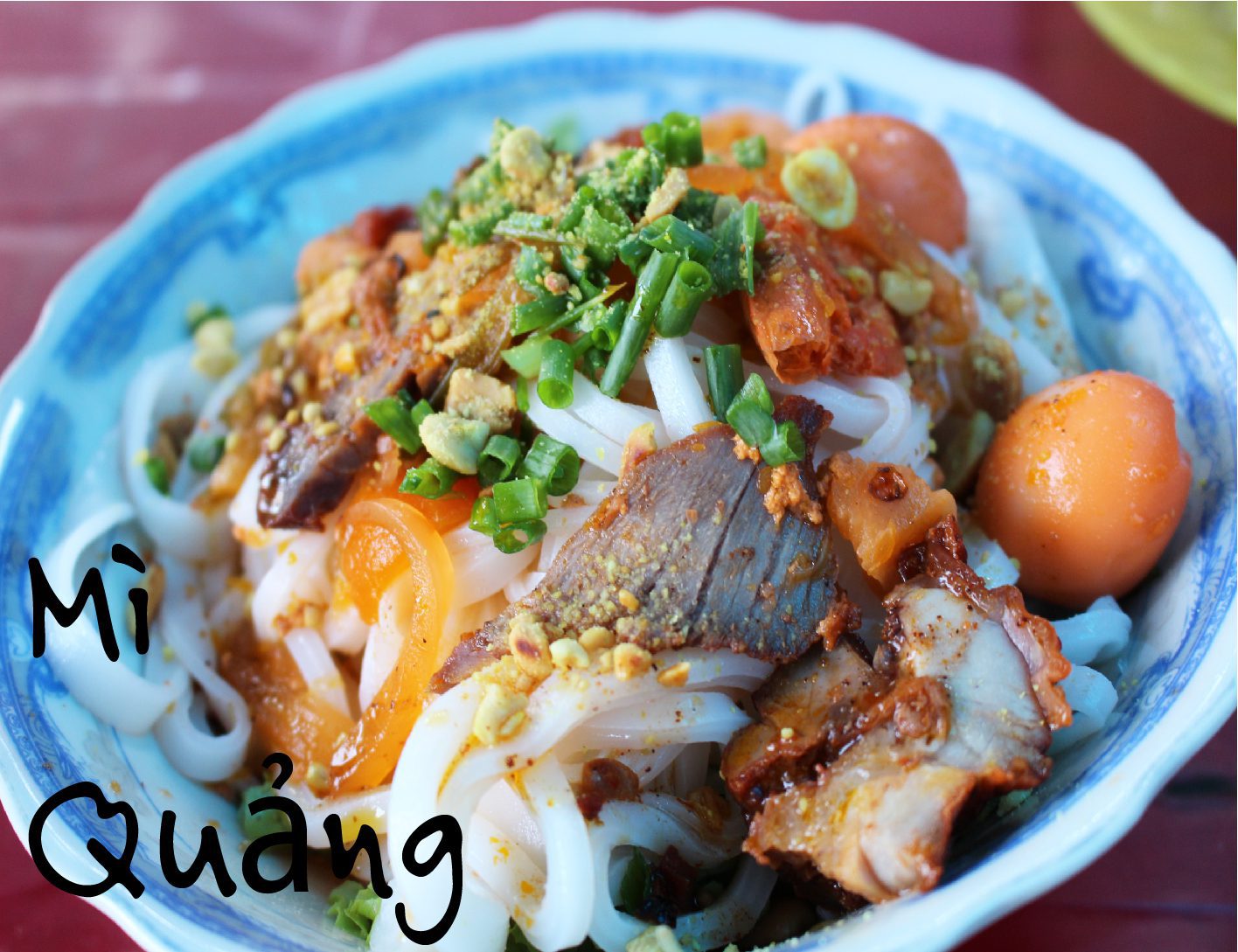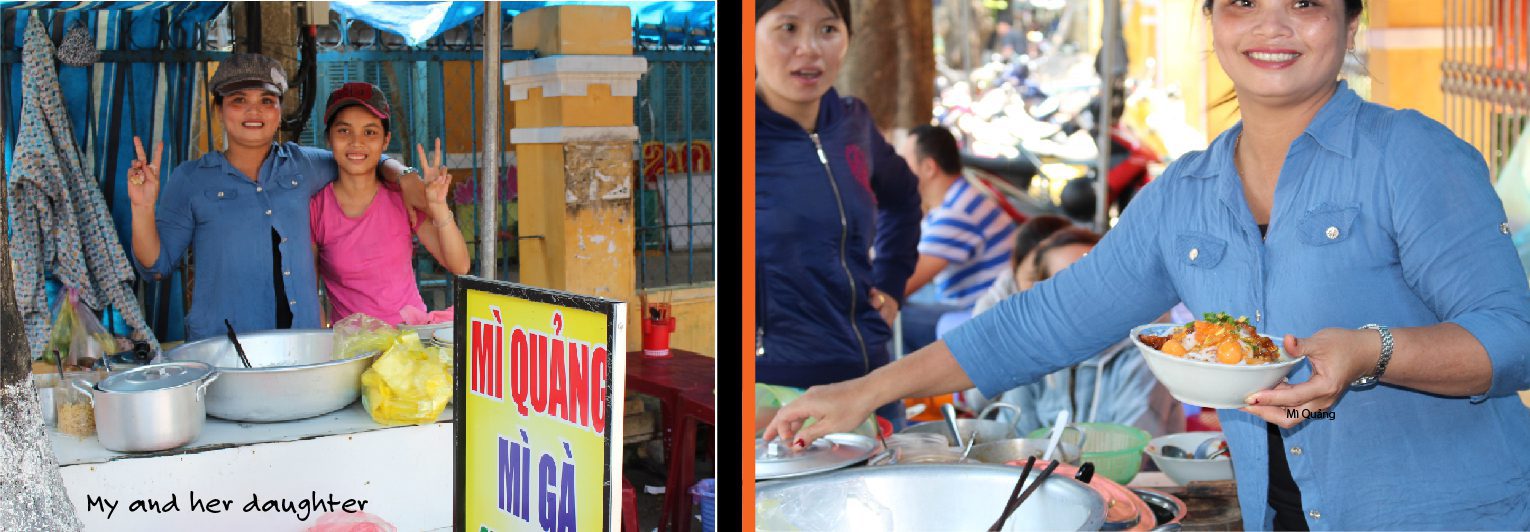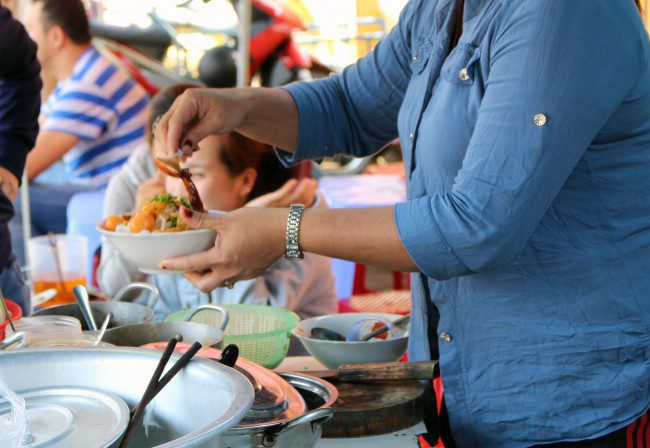Mì Quảng – The Iconic Central Vietnamese Noodle Dish
- Vespa Adventures
- Apr 6, 2015
- 3 min read
If you're in Hoi An, you have to try mì quảng. This flavorful Vietnamese noodle soup is one of the region’s most beloved dishes. With its origins in Quảng Nam Province (hence the name mì quảng, or "Quang noodles"), this dish represents a perfect balance of flavors and textures.
You might find it on the menu in Vietnamese restaurants across the country, from Hanoi to Saigon, but trust me—nothing compares to enjoying it fresh in Hoi An. Whether you’re slurping it for breakfast or an early lunch, this dish is a must-try for any food lover exploring Hoi An food culture. It's a popular breakfast dish, but you can also find Mì Quảng for lunch before 1:00pm. One bowl of this deliciousness typically costs around 15,000-20,000VND (about $1 USD!).
Meet My
My runs a classic Vietnamese red tabled street food vending spot over on Thai Phien here in Hoi An, and has been cooking Mì Quảng for 16 years. So settle down as she fixes up some mouthwatering Mì Quảng for you.
What Makes Mì Quảng So Special?
First things first- the noodles. The thick cut Mì Quảngnoodles have the perfect balance of softness and chewiness, and are made on a daily basis so they're always fresh. (You can actually try making these noodles on our Rural Villages Experiencetour!)
Next- the toppings. The most common Mì Quảng has slices of moist roasted pork, fresh lettuce, local mint & basil amongst other herbs, garlic, and spring onions are the perfect combination. However, Mì Quảngtakes this to the next level by adding some local river shrimp, boiled quails eggs, and crushed peanuts. This is all topped with a savory broth which is usually pork based with a slight sweetness of Vietnamese fish sauce. Mì Quảng can have many variations, so dishes may have something different like chicken or beef depending on what street food stalls or restaurants you go to.
(If you've never had local Vietnamese river shrimp before then they may seem really tiny. Here's a quick tip- you don't peel them. I know this might be odd to some people, but the shells are pretty soft so the shrimp will have a small crunch to them.)
Where to Find the Best Mì Quảng in Hoi An
For the real deal, follow the locals. Street vendors and small family-run eateries serve the most authentic versions, often at unbeatable prices. One of my favorite spots is a tiny food stall on Thai Phien Street, where a woman named My has been cooking mì quảng for over 16 years.
🔗 Experience local food culture on the Streets and Eats of Hoi An tour, where you’ll taste the best Vietnamese food in town.
Eating Mì Quảng Like a Local
When you sit down for a bowl, you’ll be handed a side plate of fresh herbs, lime wedges, and chili peppers. Locals always customize their mì quảng with:
✔️ A squeeze of lime for acidity
✔️ A spoonful of chili sauce for heat
✔️ A handful of crushed peanuts for added crunch
If you’re trying Vietnamese food for the first time, don’t be afraid to get your hands dirty! Many locals mix everything together, ensuring each bite is packed with flavor.
Where Else to Find Mì Quảng?
If you’re outside of Hoi An, you can still find mì quảng in other Vietnamese restaurants. In Da Nang, it's a popular street food dish, often served with roasted peanuts and extra crispy rice crackers. In Saigon, some shops serve modern takes, but they rarely match the authenticity of Central Vietnam.
Still, the best way to experience the true flavors of mì quảng is in its hometown. Hoi An food culture is built on fresh ingredients, traditional cooking methods, and recipes passed down through generations.
💡 Pro Tip: If you’re short on time, book the Streets and Eats of Hoi An tour for a guided culinary adventure through the best local food spots.
A Must-Try Vietnamese Noodle
If you’re looking for things to do in Hoi An, don’t miss out on trying a bowl of mì quảng. It’s not just a meal—it’s a cultural experience, a window into the traditions of Vietnamese cuisine, and a memory you’ll crave long after you leave.
Whether you eat it at a street stall, a local home, or a traditional Vietnamese restaurant, one thing is certain: your first bowl of mì quảng won’t be your last.


